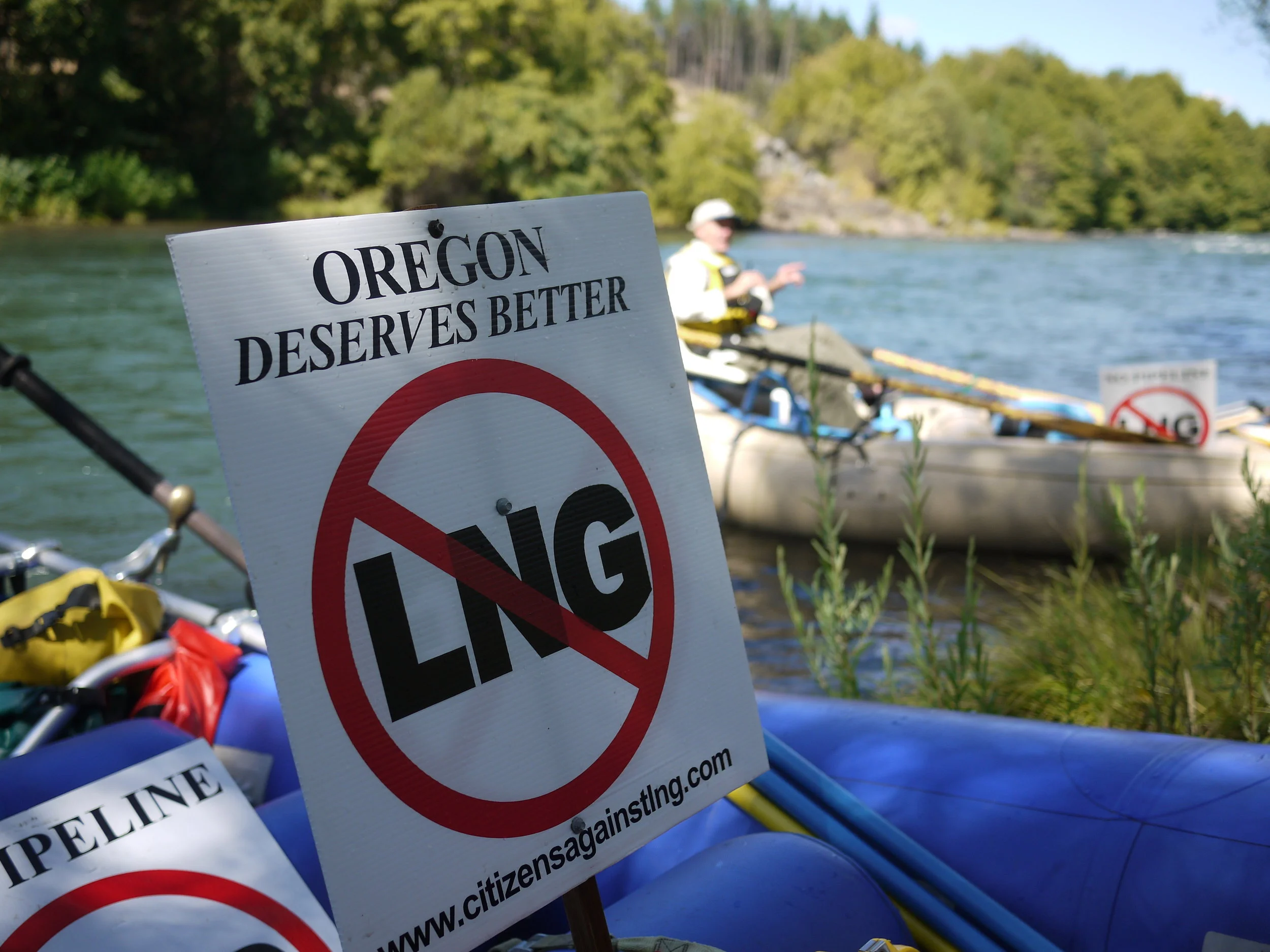The Jordan Cove LNG Export Project
Why the Jordan Cove LNG Export Project is bad for Oregon.
- Tramples on landowner rights. More than 600 landowners along the pipeline route have been held hostage for over a decade in dealing with the company's low ball offers and the threat of eminent domain. After 13 years, Pembina still has less than 35% of contracts with landowners.
- Threatens traditional tribal territories. Cultural resources, traditional tribal territories and burial grounds are threatened by both the the pipeline route and the export facility. The Karuk, Yurok, and Klamath Tribes have openly opposed the fracked gas project.
- It is a huge backward step on climate. If built, the Jordan Cove LNG terminal would become one of the largest sources of climate pollution in the state, amounting to up to 15 times the last remaining coal plant in the state of Oregon. Fracking wells that would supply this project have been documented to leak substantial amounts of methane – a powerful greenhouse gas. Studies show that "natural gas" or methane traps 86 times as much solar radiation than CO2 or carbon dioxide making it a climate killer.
- Serious safety risk. LNG facilities and natural gas pipelines are highly explosive. In 2014, the Plymouth LNG facility in Washington exploded, injuring workers and forcing hundreds of residents to evacuate their homes. The Jordan Cove terminal would be built in a highly populated region vulnerable to tsunamis, while the pipeline, full of high-pressure gas, would pass through an area with a high risk of wild fires. Many of our fire prone forests are in rural areas where emergency resources are limited.
- Higher energy prices. Exporting liquefied natural gas (LNG) “puts pressure on prices and that wouldn't be good for consumers,” according to Avista Senior V.P. Jason Thackston in 2014.
- Threats to water resources. The pipeline will affect farms and fishing businesses as it disturbs more than 485 waterways and damages salmon and steelhead habitat. “Horizontal Directional Drilling” would occur under the Klamath, Rogue, Umpqua, and Coquille Rivers, threatening our rivers with pipeline drilling accidents called “frack outs”. This drilling technique has led to major spills and water contamination in Ohio and Pennsylvania. The pipeline route would also cross 12 public drinking water sources with the potential of impacting nearly 116,000 southern Oregonians.
- Major local impacts, few jobs. More than 1,000 temporary residents from outside our communities will descend on the region during the construction phase. Corporate CEO's promise that dozens of jobs will remain after construction, but history has proven that such promises are rarely kept.
- Junk science. An environmental impact statement by the Federal Energy Regulatory Commission (FERC) on the last proposal was labeled “incoherent” by the Oregonian, especially since it left out the climate impacts from fracking, transporting, and liquefying the gas. The environmental review is nowhere near complete, with impacts to water quality, wetlands, and endangered species never having been fully analyzed by state and federal agencies, in part due to the company’s inability to provide key information on time.
- Clean energy development creates far more jobs than fracked gas. Each dollar invested in clean energy creates two to seven times as many jobs as spending that dollar on fossil fuels. Businesses, elected officials, and community residents in the Rogue Valley have been working together to speed our transition to cleaner energy like solar and to greater energy efficiency. This project threatens all the progress we are making.

